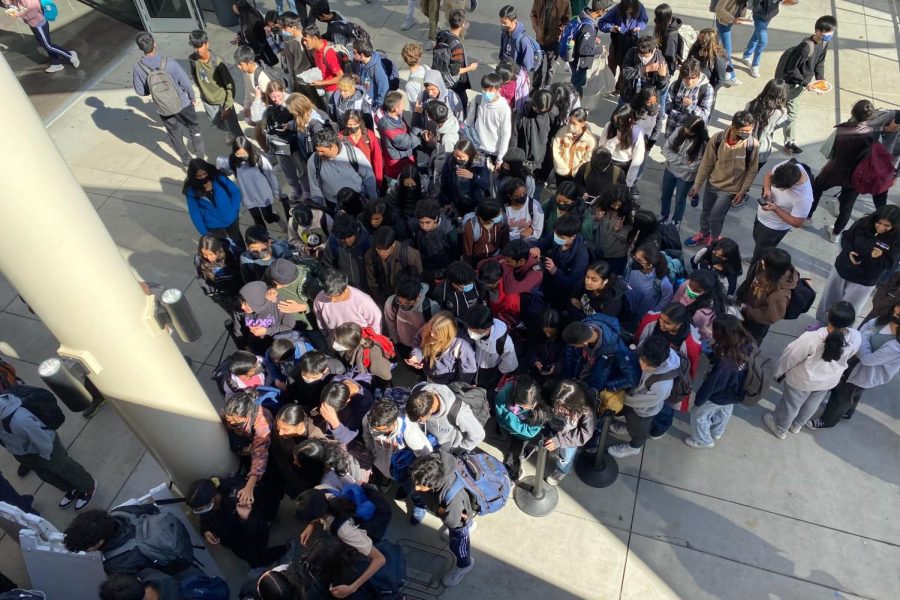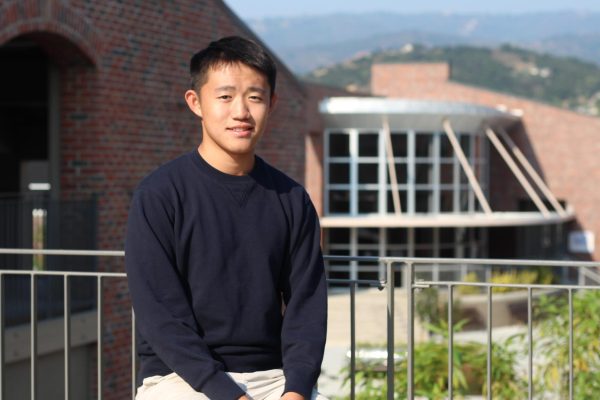Looking into the lunch line
Examining student and staff opinions on the state of the line
Cutting has resulted in students forming a triangle rather than a line on their way to get lunch.
March 24, 2023
As the bell signals the end of the period, hundreds of students make their way to the cafeteria, cutting their way to a free meal and quickly forming a cluster outside the entrance. The “sad state” of the MVHS lunch line inspired sophomore Peter Chen to start posting photos of the line on his Instagram in October 2022.
“Many people here at Monta Vista think that [the line is] normal, because they see it every day,” Chen said. “I thought it was just funny. The place where I eat lunch is near the E building [so] I get a phenomenal view of the lunch line and I thought it [was] cool to be able to see everybody all in one picture … you basically capture the whole school in one picture at the lunch line.”
According to Assistant Principal Mike White, the overcrowded line is a consequence of California’s commitment to allocate $650 million a year to a statewide lunch program, making school meals free for all students at MVHS. Now, White says the lunch line is more packed than ever.
“When they built [the cafeteria], food wasn’t free,” White said. “Students went in and purchased food and there were different selections. [The cafeteria] was set up for a smaller purchase than 800 kids trying to get a free meal. It wasn’t designed for what we’re trying to do. So now we’re trying to cram that into the same situation because that’s the only food service facility we have.”
According to sophomore Yaswanth Nallamotu, who gets brunch and lunch daily from the cafeteria, being pushed back and forth in the crowded line can be uncomfortable, but cutting has become necessary.
“[The lunch line is] too long,” Nallamotu said. “If you wait in line, it’s hard to actually get lunch in time, so I feel like cutting is easier and it doesn’t harm anyone.”

Nallumotu proposes opening multiple lines for students to receive lunches, such as the Matador Cafe, an alternate route through the gym lobby with limited lunch options but a shorter line. However, White says the Matador Cafe and another cart stationed outside the library are short-staffed and therefore do not operate consistently.
Chen believes more supervision would not resolve the overcrowding in the main lunch line, given failed attempts in the past — for instance, the stanchions installed outside the cafeteria only “[push] the cuttings further and further away” from view. Although Chen chooses not to cut, noting that the line usually disperses within ten minutes, he explains that the majority of students still resort to cutting.
“I think [cutting the line] is annoying, but if it’s not being enforced and it saves time, then of course people are going to continue doing it,” Chen said. “There’s a saying — if you can’t beat them, join them. So people cut too. I mean, it’s just a lunch line, right? So people don’t really care.”
According to White, the school’s Legislative Council has taken up the problem and is trying to find a solution. He encourages students to follow the rules, as a less crowded line would benefit everyone.
“I like those people [who do not cut]. It’s awesome,” White said. “It would be a lot better if everyone did what we’re supposed to do. Everything just goes faster if you follow the rules.”



















